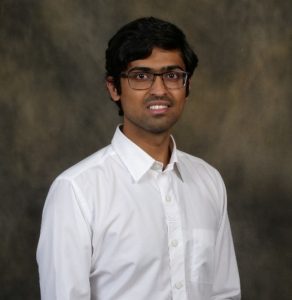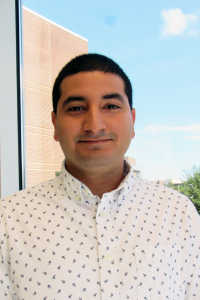
Integrated Optical Frequency Combs for Applications in Optical Communications & Microwave Photonics
Optical frequency combs have been a proven technology in many applications such as frequency spectroscopy, optical atomic clocks and high-speed optical interconnects among others. The development of chip-scale pulsed sources such as Kerr microresonator-based combs and semiconductor mode-locked lasers has significantly increased the potential to bring frequency comb applications out of research labs and into real world applications. In my talk, I will give an overview of these recently emerging integrated comb technologies and their applications. The first application I will talk about is the use of frequency combs in optical interconnects to address the limits of data transfer for future high-performance silicon chips. In particular, for short-length intra-data center communication links the development of low-cost, low-complexity, high-capacity links is of utmost importance and we utilize Kerr combs to make an effort towards that direction. Another application we will talk about is microwave frequency generation via comb-to-comb optical synchronization. High-repetition rate combs such as Kerr combs have the potential to be fully self-referenced and can therefore act as a primary reference source for any other low-repetition rate combs. I will talk about experiments for optical synchronization of a Kerr comb to a semiconductor passive mode-locked laser for high-stability repetition rate transfer and phase noise reduction.
Chinmay is currently a PhD candidate in Prof. Peter Delfyett’s Ultrafast Photonics Group. He received a B.Tech. degree in electrical engineering from the Indian Institute of Technology, Gandhinagar in 2018 and the M.S. degree in optics & photonics with CREOL in 2021. His research interests include chip-scale frequency comb sources and injection locking schemes for applications in communications and metrology. His work relies on collaborations from universities, research centers and companies which include Stanford University, University of Pennsylvania, NIST – Boulder, as well as Infinera. Chinmay has authored and co-authored 18 journal articles and conference proceedings articles. Chinmay has been a student member of OSA and IEEE since 2018 and has been granted the UCF Doctoral Research Support Award (Fall 2021) and the CREOL Dean’s Dissertation Completition Fellowship (Spring 2022).
Runners-up

A Coherent Multi-Dimensional Photonic Tensor Accelerator
Matrix multiplication is a foundational mathematical operation supporting artificial neural networks (ANNs), which have witnessed remarkable advances in recent years. The demand for the computing power of large-scale ANNs has motivated special-purpose electronic accelerators with parallel computing structures and optimized memory organization, such as graphics processing units (GPUs) and tensor processing units (TPUs). Due to the lack of parallelizable degrees of freedom and the serial nature of the multiply-accumulate (MAC) operation involved in matrix-matrix multiplication, scalability, and power consumption have become major bottlenecks in further scaling up electronic accelerators. Although photonic accelerators may have the potential to overcome these bottlenecks, scalable, energy-efficient, and high-speed photonic accelerators still cannot compete with electronic accelerators. In my talk, I will introduce a photonic tensor accelerator (PTA) based on multidimensional encoding, for the first time. The proposed PTA can perform matrix-vector, matrix-matrix, and batch matrix multiplications in a single clock cycle. In combination with passive multiplication via coherent mixing and power penalty-free duplication, the PTA can offer both significantly higher computing power and energy efficiency than state-of-the-art electronic or photonic accelerators. Although the preliminary experiment was performed using bulk optics, the proposed PTA can be implemented using 2D photonic integrated circuits or 3D micro-optics using multiplane light processing (MPLP). We envision that the proposed PTA could compete with electronic accelerators for large-scale and power-efficient artificial intelligence (AI) applications.
Alireza Fardoost is currently a Ph.D. student in Dr. Guifang Li’s research group. He received two BSc degrees in Physics and Electrical Engineering from Isfahan University of Technology, Iran in 2017. He also received his MSc degree in the Optics program at CREOL, University of Central Florida in 2019. His research contributions cover a broad spectrum of topics in optics and photonics including optical communications, integrated photonics, optics for AI, turbid optical channel characterization, and LiDARs. His publications have gained more than 100 citations and he was awarded the IEEE Student & Young Professionals (SYP) Grant. He is also an active member in educational outreach and professional events and received the IEEE Honorary Award for Notable Contributions toward the Advancement of IEEE and Engineering Professions.

Wavelength-Agile Fiber Lasers: Optical Parametric Amplification and the Raman Scattering Double-Edged Sword
Nonlinear optical processes enable the generation of wavelengths not accessible with typical laser gain media. Gas- and hydrogen-free liquid-filled optical fibers are compelling conduits for low cost, size, weight, and power applications requiring outputs at the short- and mid-wave infrared atmospheric transmission windows. We present two novel frequency conversion schemes leveraging distinct nonlinear processes: stimulated Raman scattering (SRS) and quasi-phase-matched electric field-induced optical parametric amplification (OPA). The first uses the wavelength-cascade output of SRS in hydrogen- and CBrCl3-filled fibers for Stokes frequency generation. Whereas the second uses OPA in xenon- and CBrCl3-based mixture-filled fibers to amplify a weak input signal, but careful balance of Raman and OPA gain becomes a challenge. Furthermore, we discuss ongoing characterization efforts of dispersion, Raman gain, and nonlinear susceptibilities of candidate liquids for future liquid-filled fiber experiments.
Cesar Lopez-Zelaya is currently a master’s student in the Nonlinear Optics Group, advised by Dr. David Hagan and Dr. Eric Van Stryland. He received a B.S. degree in Photonic Science and Engineering with Honors from the University of Central Florida (UCF) in the spring of 2021. Post-graduation, he consulted for G-Space Inc. and joined the Air Force PALACE Acquire program, where he was assigned to work at the Air Force Research Laboratory (AFRL) – Munitions Directorate in Eglin AFB, FL. His current research at AFRL focuses on stimulated Raman scattering and optical parametric amplification in gas- and liquid-filled fibers. At UCF he works on linear index of refraction measurements using Rayleigh interferometry, spontaneous Raman scattering, and electric field-induced second harmonic generation. His primary research interest is in novel laser source development using nonlinear effects in optical fibers.